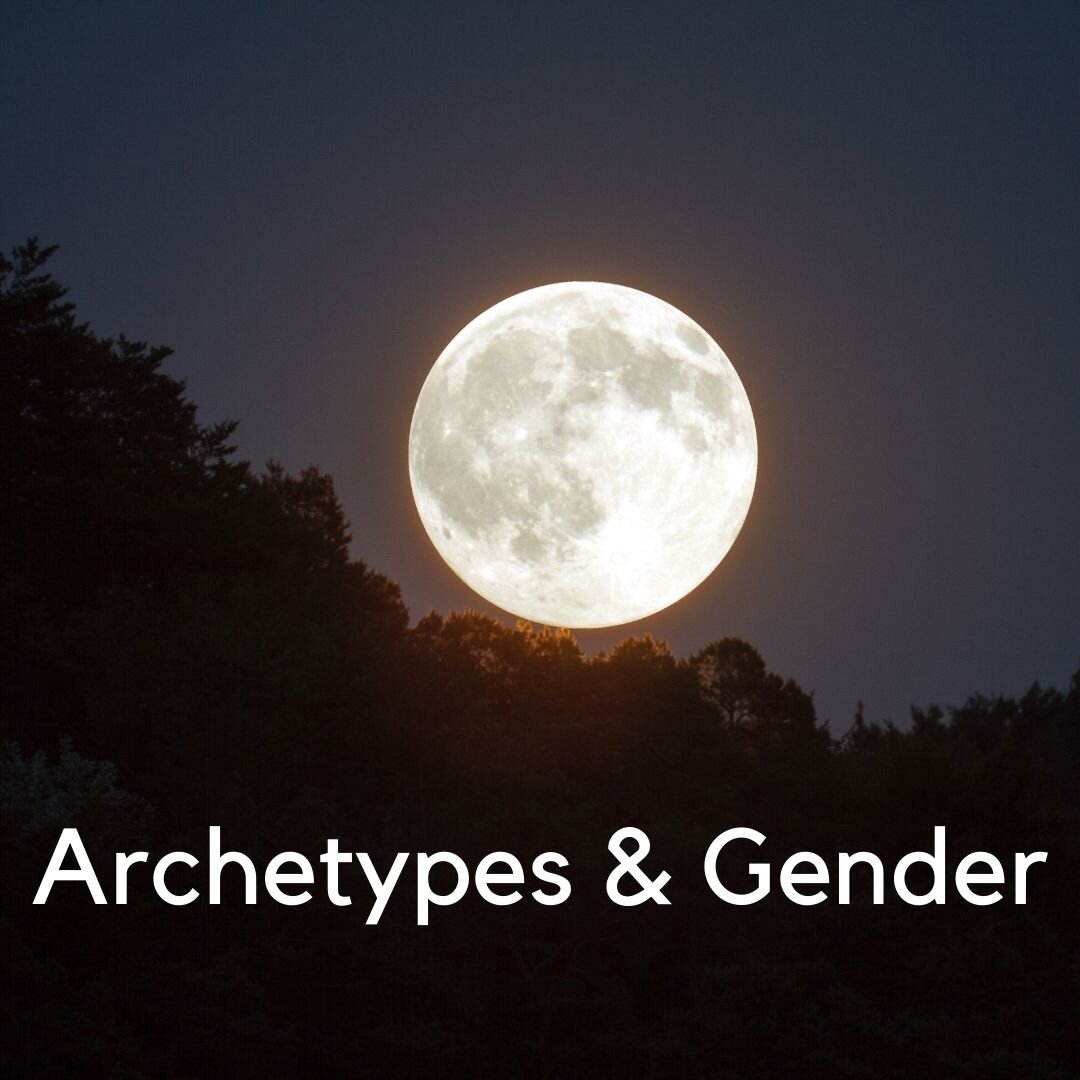Archetypes & Gender
Archetypes & Gender
The concept of archetypes was formalized and popularized by the psychologist Carl Jung. He developed the concepts of the extrovert, the introvert, and the collective unconscious. Archetypes are universal patterns that exist within the collective unconscious throughout all of humanity. There are many possible mythic archetypes that emerge across the cultures of the world— too many to list in this short module. But I will briefly explore Jung’s four primary archetypes: the self, the persona, the shadow, and the anima/animus (see below for source references).
The persona is how we show ourselves to the world—the word means “mask.” The persona contains the many different “faces” we wear in all of our various life roles. It allows people to adapt into their environments based on particular needs. The shadow as a component of the unconscious mind and is our repressed ideas, weaknesses, desires, instincts, and other perceived shortcomings. It is often considered our deepest layer of the psyche and is formed out of our attempt to adapt to the culture around us.
The self is an archetype that represents the unified unconsciousness and consciousness of an individual. Jung often represented the self as a circle, square, or mandala. The self is created through individuation, a process in which the various aspects of personality are integrated.
The anima is a feminine image in the male psyche, and the animus is a male image in the female psyche. The anima/animus represents our true self, not the self we project out into the world but the one that resides deep within. Jung believed that physiology and social influences contributed to the development of sex roles and gender identities. Jung suggested the influence of the animus and anima archetypes were also involved in this process. Jung believed in a more polarized male/female dynamic that was the more commonly accepted roles of his era. It is the anima/animus concept that leads us to our focus for this module. Jung’s essential belief with anima/animus was that both male and female archetypes exist within everyone, regardless of sexual anatomy. Repressing our inner masculinity or femininity will result in a crisis of psychology.
I believe we are experiencing this crisis on a world level as we have overemphasized the importance of the masculine. We have also polarized our thinking about gender.
I personally identify as a woman and I fully embrace being a woman. When I first imagined this coursework, I felt compelled to title it “Wisdom of Women” in hopes of remembering feminine ideas, concepts, learning, that have been systemically removed from our patriarchal white supremacist culture. But shortly after beginning to plan for this class, I began to realize that I needed to be more inclusive of the gender spectrum. I felt compelled to include a module that brought question and examination to the idea of gender.
Gender is more nuanced than our culture generally accepts. Gender also has nothing to do with sexuality. Or, I can say that who one is sexually attracted to is not determined by one’s gender. This module is here in an effort to remind us all that to really embrace a wholistic world view, we have to remember that gender is an essential component of our archetypal identity, and that gender is not solely a binary of male/female, but has biological origins and exists along a spectrum of identity.
Read
Read through this list of gender identity terms
12 genders
Journal Prompts
Take a few minutes to write about your relationship to gender. How do you identify? Do you struggle with the concept of a gender binary? What harm is created by holding rigid ideas and concepts of gender?
The most famous archetype is that of the Hero. There are infinite tales across all cultures of the Hero’s journey. Joseph Campbell brought forth this concept in his book: The Hero with a Thousand Faces.
But what about the heroine? How has the role of the heroine been represented over time, and how does the dichotomy of hero and heroine play into our roles of gender?
What does being a hero/heroine mean to you?
Sources for more reading and learning
https://www.verywellmind.com/what-are-jungs-4-major-archetypes-2795439
https://www.britannica.com/biography/Carl-Jung
https://www.routledge.com/Four-Archetypes/Jung/p/book/9780415304412
https://www.simplypsychology.org/carl-jung.html
https://www.lifehacker.com.au/2020/03/explained-the-33-gender-identities-recognised-by-the-2016-australian-sex-survey/
Interview with Corey Laitman
I met Corey at Goddard College. Corey is a musician and artist living in Massachusetts. We had a rich conversation about being artists, ideas around reclaiming wisdom, archetypes, and what gender means.
Please check out Corey’s music and their band: Cloud Belly on bandcamp!
And follow Corey on instagram here!


